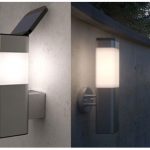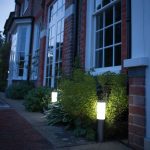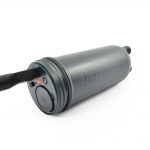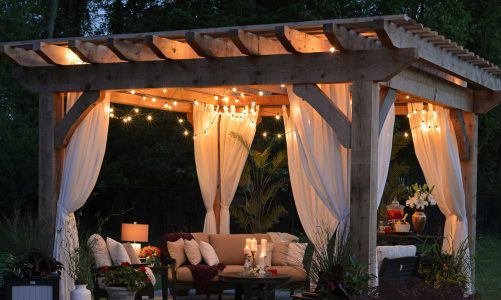Top 16 tips to get your Solar Lights back up and working.
- Cover that panel
- Replace those batteries
- Dodge the shadows
- Is that the best angle?
- South Facing?
- Water ingress
- Hungry Squirrels?
- On /off switch
- Passive Infra-Red (PIR) dials?
- Lux sensor dial?
- Battery seating/strip
- Charging behind glass
- Is it plugged in?
- To solder or not to solder?
- If all else fails there’s always the mains
- Grubby solar panel
-
Cover that panel

Covering the solar panel will often trick the lights into thinking night time has arrived early and therefore the light will come on. Solar lights typically stay off automatically by day as they are busy converting the light into energy to be stored in the batteries. This energy is then used at night to power the light. If it’s well after dusk and your light hasn’t come on cover the panel, if it does decide to work you know there’s another source of light hitting the solar panel that’s tricking the light into thinking it’s still daylight. Sometimes a subtle tweaking of the panel location can remedy the situation and have your light behaving as it should do.
-
Replace those batteries

Did you know that solar lights often have regular rechargeable batteries inside them? They should always be rechargeable batteries; NiMH or, in more modern products, Li-ion batteries. Because the batteries charge by day and discharge by night, when the light is on, the batteries will lose their charging capability over time. A sign this might be happening to your lights is reduced runtime in the evening, even after a sunny day. Good batteries should last for 1 – 2 years or more before they need replacing but this is only a guide. Some customers tell us they’ve had lights running for more than 6 years and are still using the original batteries – this is the exception rather than the rule though.
-
Dodge the shadows

Shadows are best avoided, particularly any falling on the solar panel a couple of hours either side of midday when the sun is at its strongest. Every 3 – 4 months it’s worth taking a quick look at the solar panel around midday to see how shaded the panel might be. Panels installed in the height of summer when the shadows are short are particularly susceptible to shade seeming to come out of nowhere as the sun gets lower in the sky as the seasons change.
-
Is that the best angle?

Whilst not as important as outright shadows the angle of the panel can have a real effect on light runtime, particularly throughout winter when the sun is very low in the sky. If your solar light features a panel angle that can be easily adjusted then getting up to a 45 degree angle when winter is at its peak will harvest as much sun as possible.
-
South Facing?

A Solar panel is a lot like a satellite dish – it will work most effectively if it’s pointing in the right direction. The sun rises in the east and sets in the west, so a south facing panel will harvest sunlight from dawn until dusk. Solar lights can still work if they’re not facing due south; it just means they may not work to their full potential.
-
Water ingress

Despite the obvious design flaw many solar lights can suffer from issues with water ingress. Well designed and manufactured lights shouldn’t suffer from this issue and you can keep an eye out for IP ratings to learn which products offer the best protection.
Whilst water may not always present a problem, as some lights allow water to drain away without it accessing any of the sensitive electronics, if water has caused the light to stop working there are still some things you can try: Remove any cover(s) present holding any moisture in place. Store the light for a couple of days in a hot water cupboard to dry out the light. Reassemble the light, double-checking the batteries are well seated. Give the light a day or two to charge and then turn the light on at night.It’s also worth checking with the manufacturer. A correctly installed light with a warranty should be covered for water ingress, email a photo or two and you should find a replacement is with you before long.
-
Hungry Squirrels?

Sometimes we get customers sending us interesting pictures where the wildlife have got a bit peckish and helped themselves to some nutritious wire from a string of fairy lights for example. The damage can sometimes be repaired with some electrical tape and plenty of patience. If this isn’t possible it’s worth checking with the manufacturer to see whether spares are available to save disposing of the whole product.
As we’re talking about the wire, with any installation where the wire could be subject to tension, for example a string of fairy lights in a tree, always try to leave plenty of slack between branches. Strong winds can put undue pressure on the cable causing damage that can be hard to find and even harder to fix.
-
On /off switch

This is a classic that we had to include; we’ve even had electrical engineers overlook this one. Not all solar lights have an on/off switch but for those that do make sure it’s set to on. If it’s hard to tell whether the switch is on or off, cover the panel to simulate night time and it should be easy to find out.
-
Passive Infra-Red (PIR) dials?
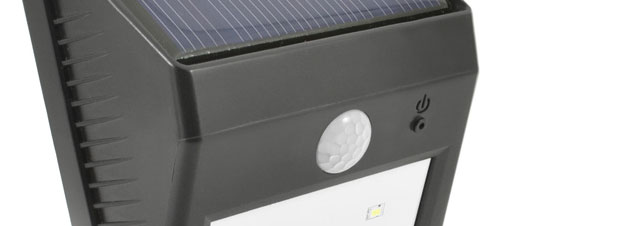
Some more advanced solar security lights have adjustable dials to fine tune motion detection sensitivity, allowing you to stop cats, bird and other wildlife from triggering the light unnecessarily. This is no one size fits all solution here as the height you install the light, the distance of the light from the motion you wish to detect and even whether the motion is moving across the PIR’s field of view all effect how this should be set. Simply put if your light isn’t activating when you need it too, start with maximum sensitivity and work back from there so the light it only activating as required. A bit of trial and error, preferably with someone to help provide the motion if you’re up a ladder, will get the job done quickly.
-
Lux sensor dial?
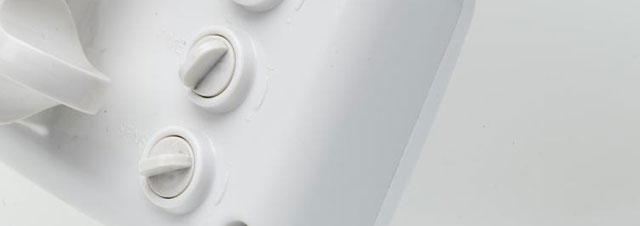
This is similar to the PIR however in this case the lux sensor determines how dark it has to be before the light will activate. This can be useful if there are other sources of light that could be tricking the lamp into thinking it’s still daylight and therefore stopping the lamp from activating. Sometimes it’s the reverse, the light could be installed somewhere relatively shady with a remote panel in a good sunny spot. In this scenario setting the lamp to activate when the ambient light is much darker could be useful to save the lamp operating when not required.
-
Battery seating/strip

Another easy thing to check is whether the batteries may have either worked their way loose in transit or as a result of installation. If they’re not touching the terminal contacts the batteries won’t be getting a charge by day or being able to provide that charge at night. If you do detect a loose battery remember to give it a day or two to charge in the lamp before operating the light as the battery may have been flat to start with.
-
Charging behind glass

While you or I can sit behind glass and feel the full effects of the sun it’s often not the case with a solar panel. Double and even triple glazed windows are very common these days and will often render many of the sun’s rays hitting the panel useless. It’s always best to get the panel outside of any glass in a good sunny spot when charging, put simply the fewer obstructions between the sun and your solar panel the more charge will be generated.
-
Is it plugged in?
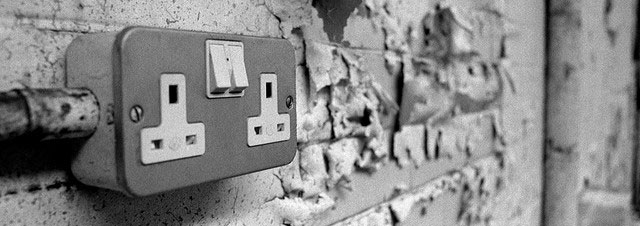
Another one you might think we’re making up here but it does happen. If you’ve got a remote solar panel that’s separate from the lamp you need to make sure the solar panel cable is firmly plugged in, with waterproof connectors tightened if present. Sometimes solar lights will have the batteries stored in the solar panel, other times the batteries will be stored in the light head itself but ultimately if the panel can’t charge the batteries or the batteries charge can’t reach the lamp you’re going to be in for a disappointing light show.
-
To solder or not to solder?

As a general rule of thumb it’s always worth contacting the company you bought from to discuss the issue prior to firing up the soldering iron. Often companies can look favourably on a situation where a customer has tried to help avoid a light ending up in landfill for the sake of a loose wire but ultimately it is going to invalidate any warranty – unless of course you’ve had a chat with the company beforehand.
-
If all else fails there’s always the mains

Plugging a mains charger into a light or removing batteries and mains charging them can seem like a good idea but unless you’re using a compatible mains charger bought with the light things could go downhill. Solar panels output a specific voltage compatible with circuit componentry and battery voltage. A mains charger might fry circuitry or overcharge batteries, ultimately leading to a purchase of a new light. If the batteries are easily removable, and clearly labelled and you have the appropriate charger then you could guarantee performance for a night or two but you might be better off getting a good solar friendly location to charge your lights in the first place. As always if you’re in any doubt follow the instructions or seek clarification from the company you purchased from.
-
Grubby solar panel
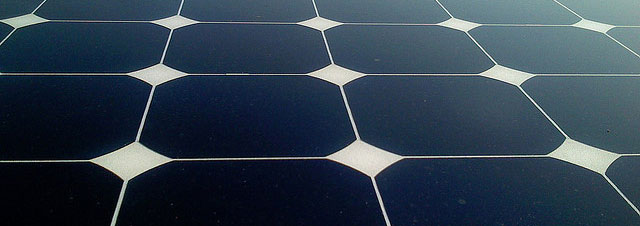
If you live near a busy road or the panel is in a dusty spot you may find your solar panel performance dips off over time as a result of a film of dust and dirt building up on the panel. Giving it a quick wipe over with a damp cloth every so often will keep it working to its full potential.
Thanks for reading this far, we hope you’ve either got your lights up and running or at least have some ideas of how to get them back up and running again. Always remember if your lights are covered by a 12 month warranty, and all good solar lights should be, provided you’ve followed the instructions you’ll have a replacement on its way to you in no time.
Here at the Solarcentre we have designed Solar Lights for more than 10yrs for UK.
We use the latest Solar Panels along with the most up to date LEDs.
Check out our Dual Panel Kodiak Range:
Our garden post lights with power saving mode :
…last but not least our USB backup range of garden fairy lights.

